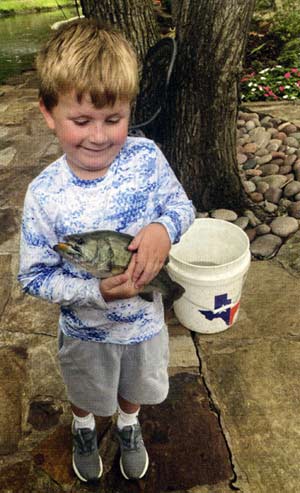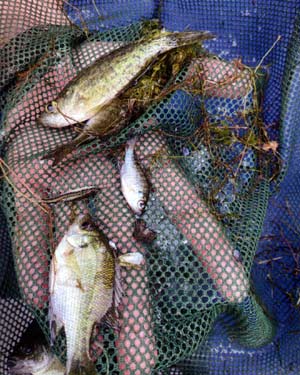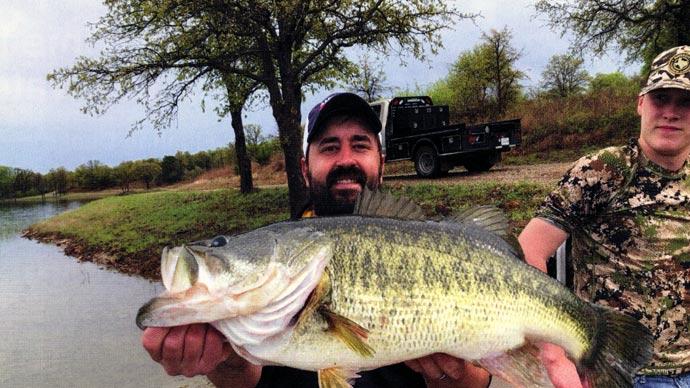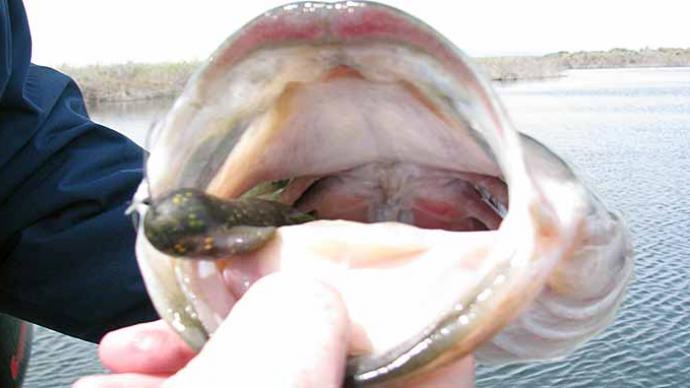
Recently, on the Pond Boss discussion forum, 'Ask the Boss', the crew of pondaholics have been discussing the growth and longevity of fish. Several issues back The Cutting Edge examined a study titled; Recreational Fishing Selectively Captures Individuals with the Highest Fitness Potential by David A. H. Suttera, et al, involving Largemouth bass and was called Aggressiveness—It Should have been Obvious—It's in the Genes. Its main finding was that the trait "catchability or vulnerability to angling" positively correlates with 1) aggression, 2) intensity of parental care, and 3) reproductive fitness. Oddly enough, the same traits affect growth and longevity.
In this issue, we examine a related topic: boldness (aggressiveness) measured in both the lab and lake. Several studies are worth reviewing, including Boldness and Behavioral Syndromes in the Bluegill Sunfish. Lepomis macrochirus. by Alexander D.M. Wilson and Jean-Guy J. Godin in Behavioral Ecology, February 2009; and Capture Technique and Fish Personality: Angling Targets Timid Bluegill Sunfish. Lepomis macrochirus. by Alexander D.M. Wilson, Thomas R. Binder, Keegan P. McGrath, Steven J. Cooke, and Jean-Guy J. Godin in Canadian Journal of Fish and Aquatic Sciences. Vol. 68,2011 and Howells, Robert G., Comparison of Initially Fast and Slow Growing Sibling Largemouth Bass Through Age 17. Texas Parks and Wildlife Department, Inland Fisheries Division, 2003.
Boldness is defined in these studies as the tendency of an individual to take risks and be exploratory in novel contexts. Using the framework of behavioral syndromes, bluegill were tested for individual differences in boldness in the laboratory using field-caught juvenile bluegills, evaluating exploratory behavior, activity, and risk taking (e.g., anti-predator) behavior. After such testing, individuals were tagged and returned to their lake of origin as part of a mark-recapture study testing for the repeatability of individual differences in boldness. They found strong and consistent individual differences in boldness within and across all three behavioral categories.
The first two studies report the relationship between individual differences in behavior and capture technique (beach seining versus angling) in wild juvenile bluegill. Both fish caught using a seine net (seined) and fish caught using a lure (angled) were individually tested under standardized laboratory conditions for their boldness, water-column use, and general activity. Individual differences in boldness were observed to be strongly correlated with the capture method. Fish caught by angling were timider and had fewer parasites than fish caught using a seine net. This was the opposite of the anticipated result. However, this relationship did not carry over to an experiment in a large outdoor pool with seine-caught, individually tagged wild fish, where bolder individuals were more likely to be angled in open water away from refuges than more timid individuals, based on their previously assessed boldness scores.
It was noted that one explanation could be based on the fact that bolder, more aggressive individuals tended to spend more time near the water surface and were more active in general than more timid individuals, and thus more likely to be seined (sample bias).
In the tests, bluegill were tested on their willingness to leave a safe area, to eat/examine food items, and to respond to simulated predators. The time spent leaving the safe area was shorter as fish size increased, but body condition was not a factor. In general, fish caught by seining were bolder; that is, they left the safe area quicker, looking to explore. However, seined fish did not have a greater activity level.

One interesting result was that stress levels were similar in seined and angled fish. Stress was higher in larger fish than in smaller fish. It seems the capture method was not so correlated with boldness when in the lake but instead was likely correlated to location. The fish in open water at any time were bolder than the fish hiding in refuge. This held true whether seine-caught or angled. When viewed in this light, the data seems to support the idea that angling may target bolder, more aggressive fish.
The tests suggest strong correlations between activity, risk-taking, and exploratory behaviors. In particular, risk-taking was strongly correlated with activity. More active individuals were also more willing to take risks when confronted with a potential predator. Low exploratory behavior correlated with low activity levels and low risk-taking, suggesting that more exploratory individuals (e.g., shorter time-to-exit refuge) were also more active and spent more time performing risky behaviors than less exploratory individuals. Also of note were the findings related to anti-predator behavior. The more the fish was exposed to the simulated (model) predator, the less wary they were.
In the third study, which is packed with excellent data over the 17-year study of specific sibling Largemouth bass, growth, and longevity are central in this discussion. Howells, Robert G. Comparison of Initially Fast and Slow Growing Sibling Largemouth Bass Through age 17. Texas Parks and Wildlife Department, Inland Fisheries Division, 2003. This study and others show that slow-growing fish often have higher survival rates and better longevity. One factor is aggressive, fast-growing fish often are eaten by predators while they are young and overly aggressive.
These papers note prior studies that provide evidence that boldness/aggressiveness is correlated with fitness, activity level, use of space, anti-predator behavior, mate selection/ reproductive success, foraging, and other traits. Based on these and other studies, it appears that a large portion of these related traits are genetically linked and heritable.
It's still early in the science phase, but evidence indicates bold, aggressive fish tend to have some traits that you may want increased in your population but may also have issues with growth and longevity.
Reprinted with permission from Pond Boss Magazine



